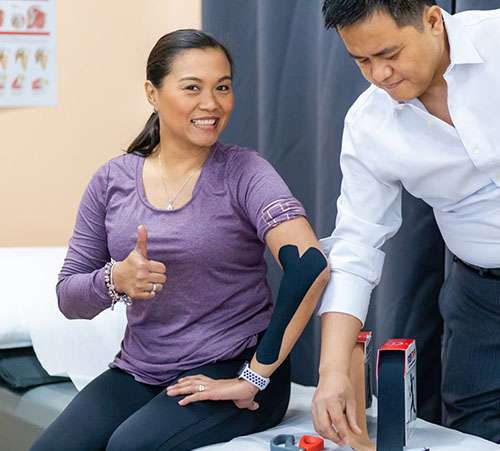Most Common Back Conditions
-
Low Back Pain
Low back pain occurs when you strain the muscles or sprain the ligament in the lower part of the back. The usual cause is the wrong lifting position, poor posture, and repeated bending.
Signs & Symptoms
-
1. Pain in the lower back.
-
2. Muscle spasms.
-
3. Tightness & tenderness.
-
4. Increase pain bending.
-
5. Difficulty carrying & lifting.
The Key To Recovery
-
1. Mobilize the back muscles.
-
2. Control inflammation.
-
3. Relieve muscle spasms.
-
4. Strengthen muscles of back and hip.
-
5. Loosen tight hip muscles.
Lumbar Disc Herniation
The lumbar disc is a gel surrounded by fibers in between your spine. It serves as a cushion that absorbs shock in the back. It also provides stability and mobility to improve function.
Repeated stress or injury can cause rupture to the disc. The gel then goes out of place and may put pressure on spinal nerves & other soft tissues. We call this lumbar disc herniation.
Signs & Symptoms
-
1. Pain & muscle spasms.
-
2. Tightness & tenderness.
-
3. Increase pain with movement.
-
4. Increase symptoms when carrying and lifting.
-
5. Often present numbness to the legs.
The Key To Recovery
-
1. Control inflammation.
-
2. Relieve muscle spasms.
-
3. Increase back muscle strength & stability.
-
4. Loosen tight hip muscles.
-
5. Proper lifting and body mechanics.
Lumbar Radiculopathy
The spinal gel inside the disc goes out, and “touch” a nerve. If the nerve gets inflamed, it produces as shooting pain and numbness in the legs. “Radiculo” means nerve root, “pathy” indicates a problem. This problem is called the pinched nerve.
Signs & Symptoms
-
1. Mild to severe back pain.
-
2. Back tightness & spasms.
-
3. Worsen with lifting or repeated bending.
-
4. Shooting pain & numbness in the legs.
-
5. Muscle weakness.
The Key To Recovery
-
1. Reduce inflammation.
-
2. Relieve tightness & spasms.
-
3. Avoid heavy lifting & use support.
-
4. Strengthen to stabilize the back and hips muscles.
-
5. Stretch tight hip muscles.
Sciatica
The sciatic nerve is formed by the merging of five nerve roots, L4, L5, S1, S2, & S3. This nerve controls the movement and sensation from the buttocks to the back of the legs.
The irritation of the sciatic nerve is called sciatica. It caused by compression due to spasms or tightness, usually the piriformis muscle. Bad sitting posture and disc herniation can also make it worse.
Signs & Symptoms
-
1. Pain & spasms in the low back to the buttock.
-
2. Buttock pain shooting to the affected leg.
-
3. Worsen with bad sitting posture.
-
4. Leg weakness, numbness, or burning sensation.
-
5. Difficulty prolonged standing and walking.
The Key To Recovery
-
1. Reduce sciatic nerve inflammation.
-
2. Relieve hip muscle spasms.
-
3. Stretch tight hip muscles.
-
4. Strengthen piriformis & hip abductor muscle.
-
5. Correct your sitting posture.
SI Joint Pain
The sacroiliac joint connects the spine to the pelvis. It bears the weight of the upper body and transfers it to the legs. The ligaments and strong abdominal muscles make it stable. If the joint starts to loosen for any reason, it gets irritated. This illicit sacroiliac joint pain we call sacroiliitis.
Signs & Symptoms
-
1. One-sided back pain.
-
2. Increase pain sitting and rolling in bed.
-
3. Muscle spasms of buttock muscles.
-
4. Pinching pain on the side affected when walking.
-
5. Difficulty bending, carrying & lifting.
-
6. It can provoke sciatica symptoms.
The Key To Recovery
-
1. Relieve inflammation of the SI joint.
-
2. Release muscle spasms
-
3. Stretched tight hip muscles
-
4. Strengthen abdominal & hip muscles.
-
5. Avoid lifting or bending with straight knees.
The Right Care Approach For Your Situation
-
-
Protective
CareOur approach to care is to protect your injury or surgery. We focus on stopping more damage to your tissues and start the healing process.The ideal method of care when you can't function due to pain and weakness. You still depend on others fully to meet your needs.Our treatment is to protect, rest, ice, compress, and elevate the injured tissue with your prescribed medications. We will also teach you home remedies.Our goal is to kick-start your recovery and prevent secondary problems. We want you to heal at the expected time.
-
-
-
Gentle
CareOur approach to care is gradual when your condition is stable but painful. Then, we focus on faster healing of your tissues and recovery of function.The ideal method when your pain is bearable, but the movement is limited. Besides, you show difficulty performing self-care and daily routine.Our treatment is heat or cold, ultrasound, and TENS combined with massages. You will start with pain-free exercises to improve your functions.Our goal is to accomplish your daily needs with no assistance. We will prepare you to regain your primary activities.
-
-
-
Progressive
CareOur approach to care is aggressive when you need to regain normal function. Our focus is training related to your daily work and active life.The choice of care when performing your daily duties is still challenging. You still have an increase in pain with increasing activities.Our treatment includes manual therapy to deal with spasms and tightness. Then, we prescribe exercises and targeted work-outs to a balanced posture.Our goal is for you to perform daily duties and hobbies without pain. Moreover, we will guide you to improve your strength without difficulty.
-
-
-
Enhance
CareOur approach to care is to maximize your performance in sports. Therefore, we focus on specific training to boost your skills in a game.The perfect method when you need to optimize your skills. It will be best to refine your balance, agility, and posture to perform better in sports.Our treatment includes taping and manual therapy to activate muscle action. In addition, you practice targeted training for specific game skills.Our goal is for you to perform well in sports and enjoy your hobbies. Thus, we will help maximize your performance in your game.
-

Physical Therapy Method of Care
Our treatment is based on the proven method of physical therapy. We use techniques tested to help our patients recover and live pain-free.
For more than 20 years of experience, the methods and healing process is almost the same for each patient. But our approach depends on their issues. Besides, we treat patients as a human, not a body part.
Our best experience for recovery is to give proper care. We have to feel what our patients feel and understand their concerns. Only then we provide the best care.
At CT Physical Therapy Care, our happiness is to give you a 5 Start experience!

Contact Us
"*" indicates required fields
-


